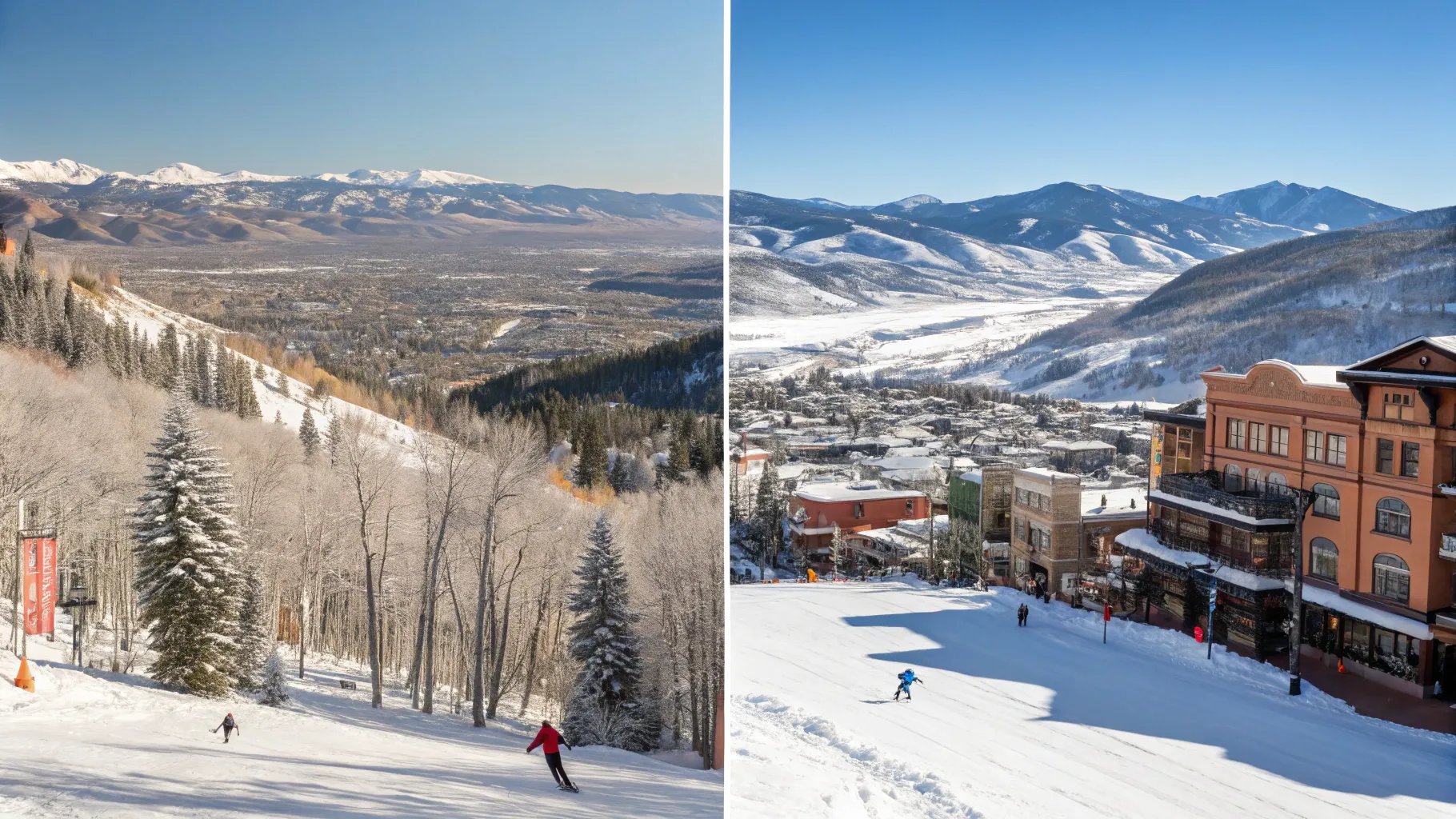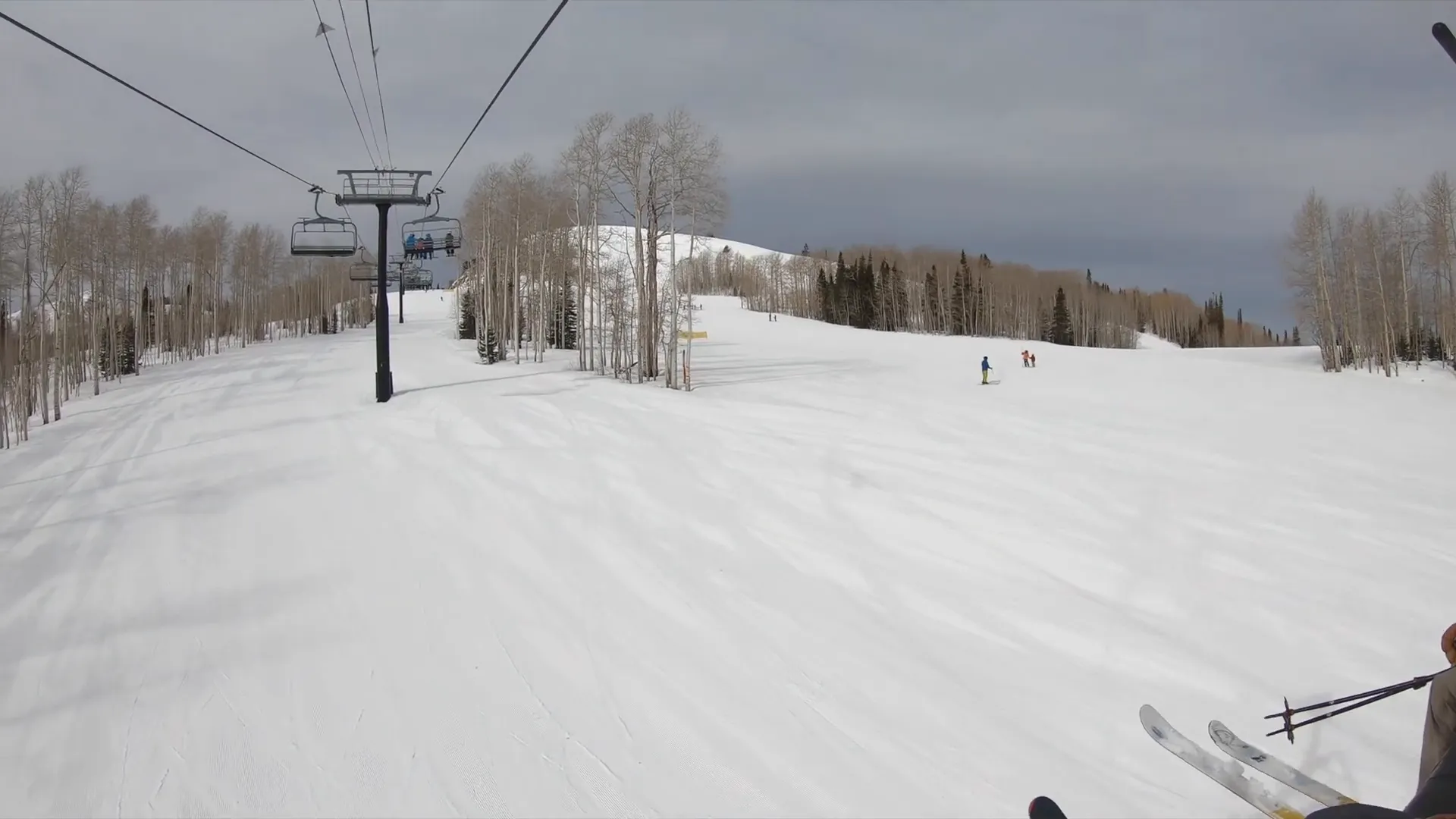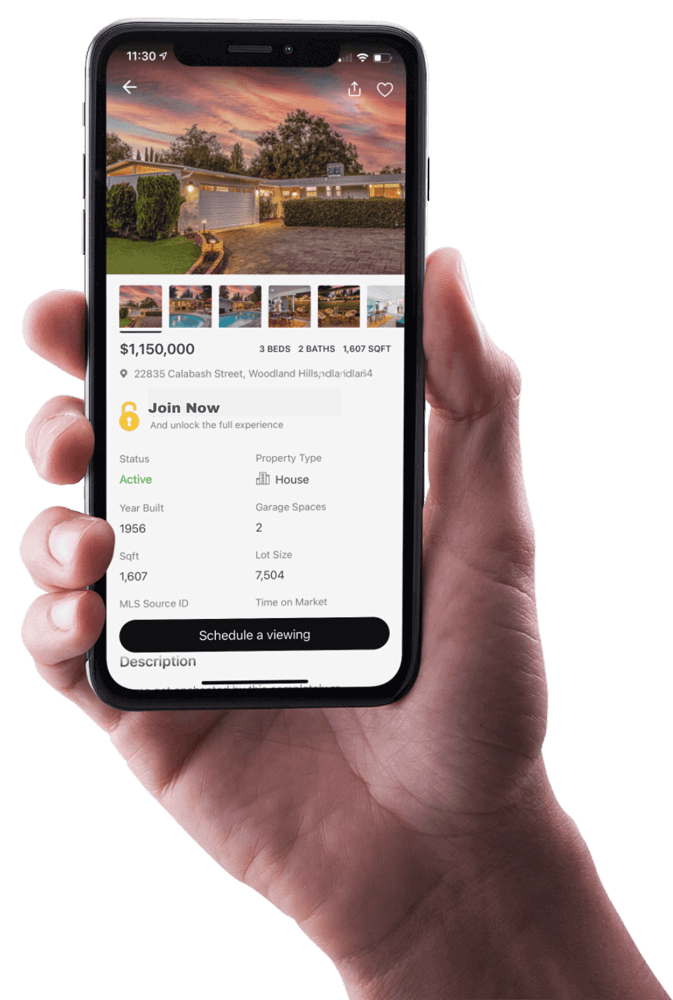Essential Insights Before Investing in Park City Utah Real Estate
Uncover the unique lifestyle, outdoor adventures, and cultural experiences that make Park City, Utah, a captivating place to live.

When it comes to skiing in the United States, Park City and Vail are often at the top of every skier's list. Both resorts boast stunning terrains, diverse experiences, and unique charm, but which one is right for you? In this comprehensive comparison, we’ll dive deep into the aspects that set these two giants apart, helping you make an informed choice for your next ski trip.
When choosing between Park City and Vail, the decision often comes down to personal preferences and priorities. Both resorts offer breathtaking landscapes and world-class skiing experiences, but they each have unique characteristics that make them stand out. Understanding these nuances can help you select the perfect destination for your next ski adventure. From accessibility to terrain diversity, let’s examine what each resort has to offer.
Accessibility is a vital factor for skiers planning their trips. Park City shines in this regard, being less than an hour's drive from Salt Lake City International Airport. This proximity makes it a favored choice for those looking to maximize their time on the slopes rather than spending hours in transit. In contrast, Vail requires a longer journey, taking over two hours from Denver International Airport. While Vail does have the Eagle County Regional Airport nearby, securing a flight there can be pricier, limiting accessibility for many travelers.
Both Park City and Vail are known for their excellent snow quality. Each resort benefits from a healthy number of powder days throughout the ski season. However, if snow preservation is your primary concern, Vail typically has the edge. At a higher elevation, Vail retains its snow base better, ensuring consistent skiing conditions. While Park City’s snow is also of high quality, it tends to get tracked out more quickly, especially in popular areas. The unique geography of Vail allows for some remote lift-accessed zones that can remain untouched for days, providing a different skiing experience.
When it comes to sheer size, Park City boasts the largest skiable area in the U.S. with 7,300 acres. However, Vail’s layout can make it feel more expansive due to its design. Although Park City has a more significant skiable footprint, much of Vail’s terrain is accessible from its boundaries, creating a more cohesive skiing experience. Park City’s two separate areas, Park City Mountain and Canyons, require a gondola to connect them, which can create a sense of separation for visitors. This layout can lead to longer travel times between runs, especially for those unfamiliar with the mountain.
Navigating the mountains can significantly impact your skiing experience. Park City presents some challenges in this regard, as skiers may need to take multiple lifts to reach different zones. If you start at one base, you could find yourself taking at least four lifts to reach another area. This situation can be frustrating, particularly if you end up in the wrong zone late in the day. In contrast, Vail’s design allows for easier transitions between bases, often requiring just one lift ride. This streamlined navigation can enhance your time on the slopes, allowing for more runs instead of time spent in transit.
Terrain diversity is another crucial factor for skiers. Vail excels with its varied terrain, particularly its back bowls, which offer expansive high-alpine slopes. These areas provide breathtaking views and a sense of adventure that many skiers seek. Park City, while primarily a tree-line resort, has its strengths in lift-accessed terrain and well-spaced glades. The aesthetic of each resort also differs, with Vail having a more upscale, polished vibe compared to Park City's charming and down-to-earth atmosphere. This difference may appeal to different types of visitors—those seeking luxury might prefer Vail, while families or casual skiers may find Park City more inviting.

Whether you opt for the accessibility and charm of Park City or the upscale experience and terrain diversity of Vail, both resorts promise unforgettable skiing adventures. Each has its strengths and weaknesses, making them suitable for different types of skiers. Consider what matters most to you—be it snow quality, resort size, or ease of navigation—to make the best choice for your ski trip.
For those just starting their skiing journey, Park City offers a more accessible experience compared to Vail. The layout of Park City allows beginners to find their footing in both lower and mid-mountain areas, where gentle slopes and well-maintained runs cater specifically to novice skiers. The greens here are not just catwalks; they provide a genuine skiing experience that encourages confidence-building. In contrast, Vail's beginner terrain is mostly situated at mid and upper elevations, which may pose challenges for less experienced skiers. The catwalks at Vail can be daunting, making it necessary for beginners to download lifts to return to the base, which can be frustrating.
However, it’s essential to note that while Park City excels in beginner terrain, all worthwhile green runs are located on the Park City side, leaving the Canyon side with only a single bunny hill. This makes planning your day crucial for beginner skiers aiming to maximize their time on the slopes. Vail, on the other hand, offers beginner trails accessible from every base, providing a more comprehensive experience for those new to skiing.
For intermediate skiers, both Park City and Vail present a wealth of options. However, Vail may have a slight edge due to its diverse range of groomed cruisers and high alpine terrain. Both mountains feature impressive intermediate glade terrains that allow for exploration and adventure. At Vail, skiers can navigate through thinly wooded pines and enjoy the scenic vistas of Blue Sky Basin. Park City, with its light, widely spaced aspens in the Dreamscape Zone, also offers a delightful experience for intermediates.
While both resorts leave some of their blue runs ungroomed, Vail tends to offer more opportunities for untracked snow, allowing intermediates to enjoy varied conditions throughout their skiing experience. This diversity in terrain and snow conditions can make Vail feel more expansive and exciting for intermediate skiers looking to challenge themselves.
When it comes to advanced and expert skiing, both Park City and Vail deliver thrilling experiences. Both resorts boast extensive steep ungroomed terrain, appealing to those looking for a challenge. Park City features a number of advanced groomers that allow for speed runs, while also offering expert runs that are demanding and exhilarating. Vail’s frontside shoots hide obstacles like rocks and small cliffs, adding an element of risk and excitement for advanced skiers.
For true experts seeking the toughest terrain, Park City stands out with its Jupiter Peak shoots, which offer narrow passages and tight turns that require skill and precision. However, accessing these areas often necessitates a 20 to 30-minute hike, which can deter some skiers. Vail’s back bowls provide wide-open spaces that are perfect for advanced skiers looking to carve their way through deep powder. The combination of varied terrain and conditions at both resorts ensures that advanced and expert skiers will find plenty of challenges to keep them engaged.
Park City truly shines when it comes to terrain parks, offering world-class freestyle areas that cater to all levels of skill. From small features for beginners to large jumps and rails for the more experienced, these parks are designed to accommodate every type of freestyler. The setup is so appealing that professional competitors often choose to practice here, making it a hotspot for those looking to hone their skills.
In contrast, Vail’s terrain parks are less impressive. While they do exist, they often lack the variety and excitement found at Park City. The mountain operations team at Vail tends to be slower in opening their parks, and they rarely feature a large terrain park or half-pipe. This discrepancy can significantly impact the experience for park enthusiasts, making Park City the clear choice for those who prioritize freestyle skiing.
Lift systems play a crucial role in the overall skiing experience, and here, Vail has a modern and intuitively designed lift network that enhances accessibility. Almost every area at Vail is serviced by high-speed lifts, ensuring that skiers can quickly reach their desired runs without unnecessary delays. Although some of Vail’s lifts are long, they efficiently transport skiers directly to the areas they want to explore.
Park City, however, still relies on some slower fixed-grip chairs, which can hinder the overall experience. The indirect nature of Park City’s lift network can lead to longer travel times and frustrating detours, especially for those unfamiliar with the layout. This inefficiency can become particularly noticeable during busy times when lines are longer. While both resorts have similar vertical rises, the time it takes to ascend can differ significantly, with Park City often requiring more time than Vail.
Managing crowds is a significant concern at major ski resorts, and both Park City and Vail experience their share. Recently, Park City has struggled with crowd management due to its less efficient lift system, leading to notorious choke points and lengthy wait times. Lines of over 20 minutes at key lifts have become commonplace, especially at the Quicksilver Gondola, which provides the only access between Park City and Canyons.
Vail, on the other hand, tends to handle crowds more effectively. While base lifts can get crowded in the mornings and back bowl chairs can be bottlenecks on powder days, overall, Vail sees more manageable lines compared to Park City. The presence of expert-only chair lifts at Park City that rarely see lines is a small advantage, but the general experience of navigating crowds is smoother at Vail.
When planning your ski vacation, lodging is a crucial factor, and both Park City and Vail offer a diverse range of accommodations to suit various preferences and budgets. In Park City, you’ll find options ranging from charming inns and cozy cabins to luxury hotels and ski-in/ski-out condos. The downtown area features a vibrant atmosphere with easy access to shops and restaurants, while the Canyon Village offers a more serene setting. Notably, Park City tends to provide better value for accommodations compared to Vail, where prices can soar due to its upscale reputation.
For those considering Vail, the town is essentially one sprawling base village, offering a plethora of high-end hotels and lodges. While the luxury experience can be enticing, be prepared for higher rates, especially during peak season. Regardless of your choice, both resorts ensure that you’re never far from the slopes, making it easy to maximize your skiing adventure.
Parking can significantly influence your ski experience, especially during busy holiday periods. Park City offers a mix of free and paid parking options, with limited free spots available at the Canyon Village. However, it’s essential to arrive early to secure one of these coveted spots. As of the next winter season, Park City will implement more paid parking, but it still remains a more affordable option compared to Vail.
In contrast, Vail has a stricter parking policy. All convenient parking areas cost at least $30 per day. This can add up quickly, particularly for families or groups planning to stay for several days. Understanding the parking situation at both resorts can help you budget accordingly and avoid any last-minute surprises.
One of the significant advantages of skiing in Park City is its proximity to other world-class ski resorts. Just a short drive away, you’ll find Deer Valley, known for its meticulously groomed slopes and luxurious amenities. Additionally, Park City is less than an hour from renowned locations like Alta, Snowbird, Brighton, and Solitude, providing ample opportunities for those looking to explore beyond their primary ski destination.
Vail, while slightly more limited in nearby options, is still conveniently located near Beaver Creek, just 20 minutes away. Other resorts such as Copper Mountain, Breckenridge, Keystone, and Arapahoe Basin are all within an hour’s drive, making Vail an excellent base for multi-resort exploration. The accessibility of these nearby mountains enhances the skiing experience, allowing visitors to diversify their adventures.
For avid skiers, the choice of ski pass can greatly influence your experience. Both Park City and Vail are part of the Epic Pass, which offers unlimited access to a vast network of ski resorts across North America. This pass allows you to explore over three dozen locations, making it a fantastic option for those who want to experience multiple mountains in a single season.
The full Epic Pass grants unrestricted access to both Park City and Vail, while the Epic Local Pass includes some holiday blackouts and limitations on the number of days at certain resorts. This flexibility is beneficial for skiers who want to maximize their time on the slopes without being tied to one specific location.
Both Park City and Vail have distinct advantages that cater to different types of skiers. Park City is ideal for those who prefer a more laid-back atmosphere, excellent value in lodging, and a vast skiable area. Its proximity to other mountains and family-friendly environment make it a popular choice for families and casual skiers.
On the other hand, Vail excels in its overall layout, varied terrain, and high-speed lifts, making it a strong contender for those seeking a more upscale experience. The combination of aesthetic appeal and efficient navigation can enhance the skiing experience for those willing to invest a bit more.
Ultimately, the choice between Park City and Vail will depend on your personal preferences, budget, and skiing goals. Both resorts promise unforgettable skiing adventures, making either choice a win for winter enthusiasts.
Which resort is better for families?
How do the snow conditions compare?
Are there more dining options in Park City or Vail?
Can I ski both resorts in one season?
Access all your saved properties, searches, notes and more.
Access all your saved properties, searches, notes and more.
Enter your email address and we will send you a link to change your password.


Your trusted MLS search companion